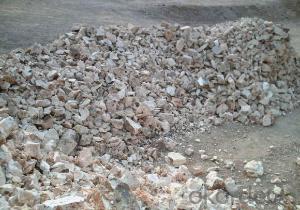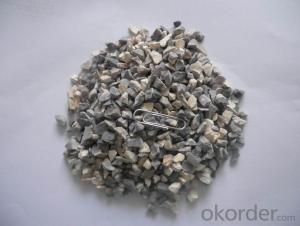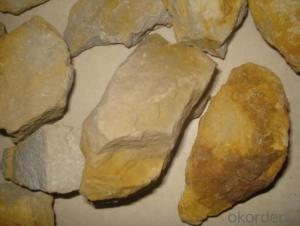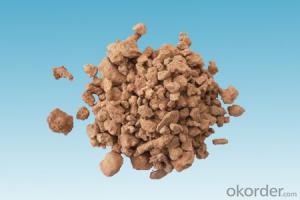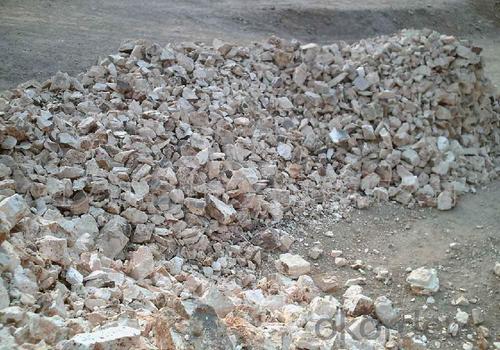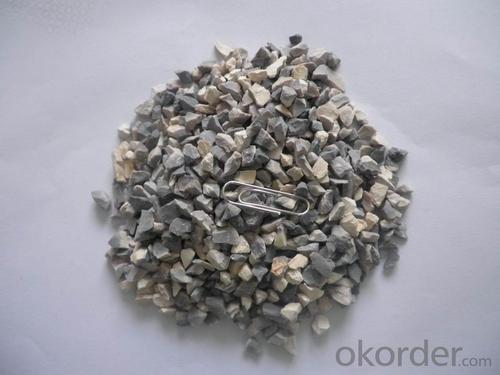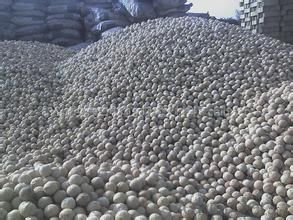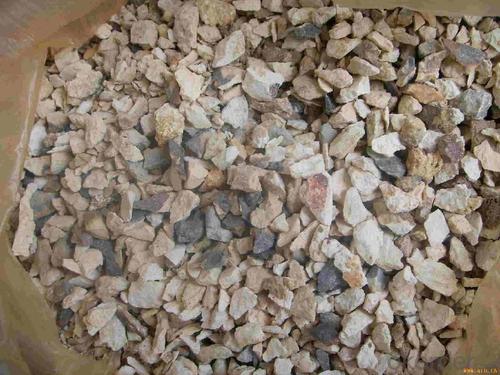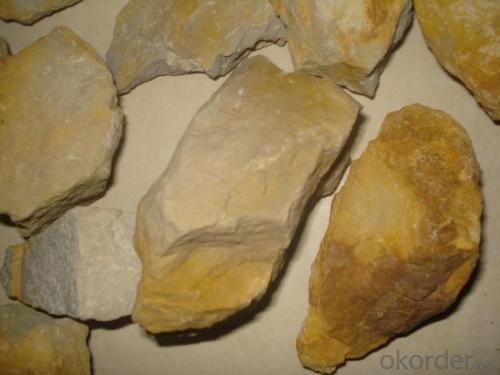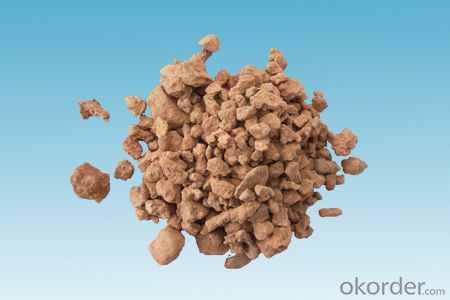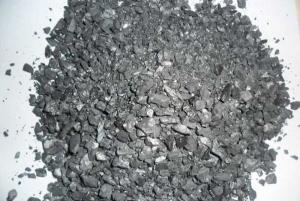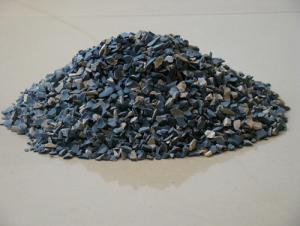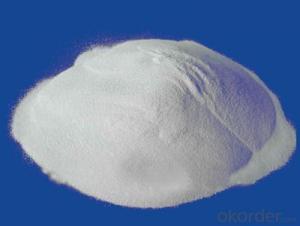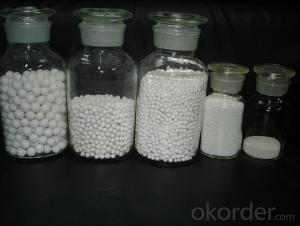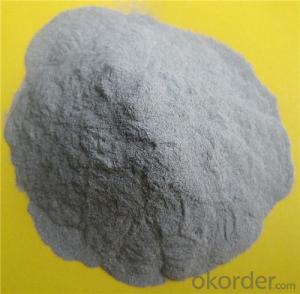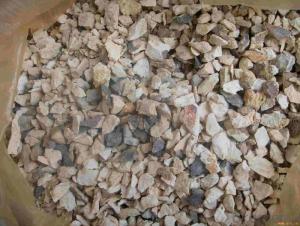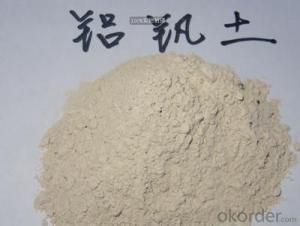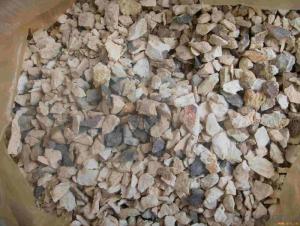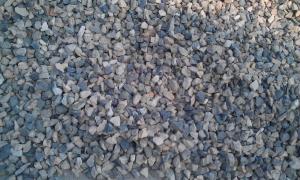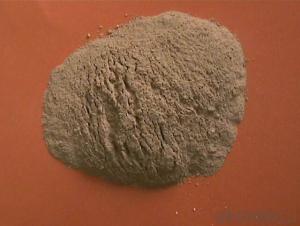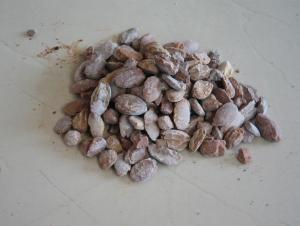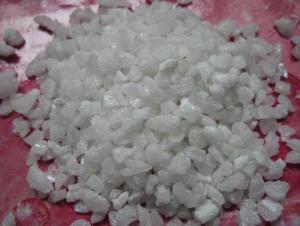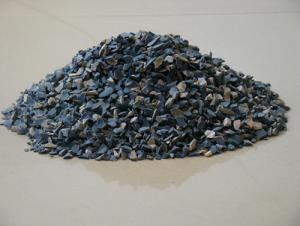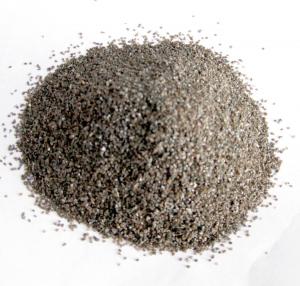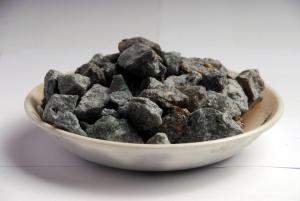Raw Materials for Refractory:Calcined Bauxite for Aluminate Cement of CNBM in China
- Loading Port:
- Tianjin
- Payment Terms:
- TT OR LC
- Min Order Qty:
- 11 m.t
- Supply Capability:
- 11111111 m.t/month
OKorder Service Pledge
OKorder Financial Service
You Might Also Like
1.Structure of Calcined Bauxite Description
Bauxite (aluminous soil; Bauxite) is also called the alumina or bauxite, main ingredients are alumina, hydrated alumina containing impurities, is an earthy mineral. White or gray, brown and yellow or light red by iron. From 4 to 3.9 g/cm3 density, hardness, 1 ~ 3 is not transparent, very brittle. Very difficult to melt. Insoluble in water, soluble in sulfuric acid, sodium hydroxide solution. Mainly used for aluminium, refractory material.
2.Main Features of the Calcined Bauxite
Calcined bauxite is one of the principal ore of aluminum. Calcined bauxite contains hydrous aluminum oxides and aluminum
hydroxides, formed through the laterization of aluminous rocks in tropical and subtropical areas .Calcined bauxite is obtained by calcining (heating)superior grade bauxite at high temperature (from 85OC to 1600C) .This removes moisture there.By increasing the alumina content,compared to an alumina content of about 57%to 58% in raw bauxite, calcined bauxite has an alumina content of 84%to88%.The heating is carried out in rotary kilns.
3.Main usage of the Calcined Bauxite
(1) aluminium industry. Used in national defense, aerospace, automotive, electronics, chemical industry, daily necessities, etc.
(2) precision casting. Alumina clinker made after the mould precision casting processed into fine powder. Used in military industry, aerospace, communications, instrumentation, machinery and medical equipment department.
(3) is used for refractory products. High bauxite clinker refractoriness is as high as 1780, chemical stability strong, and good physical properties.
(4) aluminum silicate refractory fiber. With light weight, high temperature resistance, good thermal stability, low thermal conductivity, heat capacity is small and the advantages of resistance to mechanical shock. Used in iron and steel, nonferrous metallurgy, electronics, petroleum, chemical, aerospace, atomic energy, defense and other industries.
(5) in magnesia and bauxite clinker as raw materials, add the appropriate binder, used for pouring ladle whole ladle lining has particularly good effects.
(6) manufacture alumina cement, abrasive materials, ceramic industry and chemical industry can be aluminum of various compound.
4. Calcined Bauxite Images
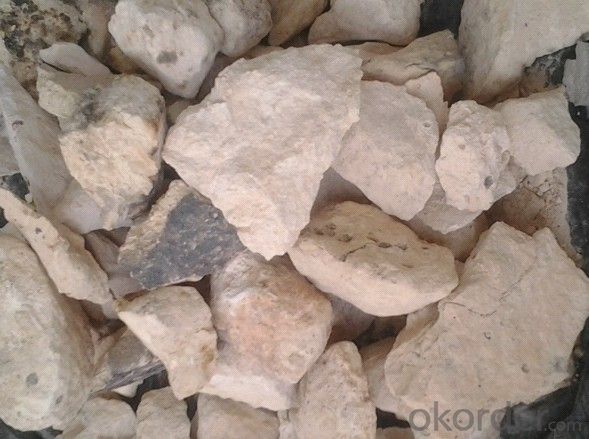
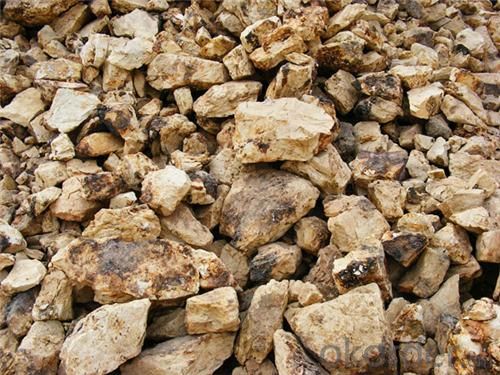
5. Calcined Bauxite Specification
| grade | Al2O3 content | Fe2O3 content | TiO2 content | K2O+Na2O content | CaO+MgO content | bulk density |
| 75 | 75%min | ≤ 3.0% | ≤ 4.0% | ≤ 0.3% | ≤ 0.5% | ≥ 2.70 |
| 80 | 80%min | ≤ 3.0% | ≤ 4.0% | ≤ 0.3% | ≤ 0.5% | ≥ 2.80 |
| 85 | 85%min | ≤ 2.0% | ≤ 4.0% | ≤ 0.3% | ≤ 0.5% | ≥ 3.00 |
| 86 | 86%min | ≤ 2.0% | ≤ 4.0% | ≤ 0.3% | ≤ 0.5% | ≥ 3.10 |
| 87 | 87%min | ≤ 2.0% | ≤ 4.0% | ≤ 0.3% | ≤ 0.5% | ≥ 3.20 |
| 88 | 88%min | ≤ 1.8% | ≤ 4.0% | ≤ 0.25% | ≤ 0.5% | ≥ 3.25 |
| 90 | 90%min | ≤ 1.8% | ≤ 4.0% | ≤ 0.25% | ≤ 0.5% | ≥ 3.30 |
6.FAQ of Calcined Bauxite
1). Q: Are you a factory or trading company?
A: We are a factory.
2). Q: Where is your factory located? How can I visit there?
A: Our factory is located in ShanXi, HeNan, China. You are warmly welcomed to visit us!
3). Q: How can I get some samples?
A: Please connect me for samples
4). Q: Can the price be cheaper?
A: Of course, you will be offered a good discount for big amount.
- Q: What is acid refractory material?
- In fact, with the content of zirconia refractory multiple theory should also be acid refractory
- Q: What are the requirements of refractory temperature of refractory brick?
- Refractoriness can reach 1690 degree, but the highest operating temperature is 1350 degree. If the temperature goes higher, operation life will be greatly shortened.
- Q: Who knows what kind of material the fire-proof plate use, and is it good?
- It is the decorative board made by adopting silicious material or calcareous material as the main raw material, and blending them with certain proportion of fibrous material, lightweight?aggregate, adhesive and chemical?additive before steam pressing. It is a kind of new material and more and more frequently used currently not only for it is fireproof. Construction of the fire-proof plate has higher requirements on the adhesive, and the price of the fire-proof plate with better quality is more expensive than that of the decoration panel. The thickness of the fire-proof plate is generally 0.8mm, 1mm, and 1.2mm. So it is the best material for making cupboards.
- Q: Who knows which chrome refractories produced by the Henan refractory plant can be used for continuous casting?
- The sand is used as the filling material for the bottom of the ladle. Zhengzhou real iron refractory Co., Ltd. is specialized in the production of non-ferrous industries. All kinds of refractory materials used in glass kilns and cement kilns are sold directly by manufacturers. The prices are reasonable.
- Q: What needs to be noted when choosing and using blast furnace fireproof materials? Who knows?
- there are different temperatures in various parts of the blast furnace, thus using different types of refractory.
- Q: What is refractory cement?
- Ordinary portland cement is common cement with relatively high early strength, while refractory cement is low in this regard. Refractory cement is a characteristic cement which can only be used in special projects, not suitable for general engineering. And in the winter, it is not suitable for construction use.
- Q: What are the best refractory materials in 2,400 Celsius degree?
- It is the purpose that decides what kind of materials you should use. What you have said is 2,400 Celsius degree, right? It is about the fire resistance of the material or the required temperature of it?
- Q: Does anyone know the fire endurance of steel stud partition?
- Indeed ① Dragon Brand gypsum board fire-resistant partition: Its fireproofing extreme time is 4 hours, suitable for firewalls of a variety of public buildings, public exit passageway and other partitions, which meets the first level of fire protection standard ② fireproofing and pressure-resistant partition: Refers to the partition which can withstand momentary gas shocks of over 1200pa , mianly used for the room partition with inert gas fire-fighting needs, such as equipment rooms. The pressure-resistant degree of fireproofing and pressure-resistant partition of Beixin Building Materials can be up to 4800Pa, especially suitable for high-rise fireproofing.
- Q: What's the commonly used refractory material for ladle?
- Commonly used types of refractory material for ladle are as follows: high-alumina brick, clay brick, magnesia-carbon brick, aluminum carbon brick, magnesia chrome brick, spinel brick, corundum brick, high alumina castables, aluminum silicon carbide carbon castables, refractory castables for ladles, magnesium castables, magnesia chrome spray coating, dry vibration materials, etc. Hope it's helpful for you!
- Q: what materials can make external wall fireproofing paint have the fireproofing effect
- First, the width of fire barrier is greater than 30CM, and the thickness should be same to the thickness of insulation material. fire barrier zone insulation board must do the whole area sticking construction with the base wall during the construction. fire barrier zone insulation board is required to assistant binding by anchor bolt, anchor bolt must suppress the underlying mesh. fire barrier zone should be set at the upper position of door and window openings, the distance between the low edge of isolation belt and the upper edge of the window must be less than 50cm. When the fire barrier zone is set on the edge of the window, fire barrier zone at the upper part of the window should do flanging when sticking, flanging glass fiber mesh must exceed 10CM than firebreak insulation board. flanging network, underlying network and surface network can not be overlapped or butted at the top of the window. the thermal resistance of fire barrier zone must be half than EIFS thermal resistance in the cold northern areas, while the thermal resistance of fire barrier zone must be three times than EIFS thermal resistance in the hot summer and cold winter area. Cement foam insulation board is recommended to use as external insulation board materials, level A exterior wall cement foam insulation board is a new ultra-lightweight thermal insulation material, with the advantages of lightweight concrete and insulation performance, with characteristics of low production costs, simple process, easy to operate, small product density in 180250kg / m3, high strength, low water absorption and good insulation properties, thermal conductivity of 0.05 ~ 0.07W / m · K and level A non-combustible; it is suitable for external wall insulation and fire isolation belt, and can meet the urgent needs of the market of exterior thermal insulation. With the increase of the intensity of the building fireproofing, the products will become the leading products in building insulation market in the future.
Send your message to us
Raw Materials for Refractory:Calcined Bauxite for Aluminate Cement of CNBM in China
- Loading Port:
- Tianjin
- Payment Terms:
- TT OR LC
- Min Order Qty:
- 11 m.t
- Supply Capability:
- 11111111 m.t/month
OKorder Service Pledge
OKorder Financial Service
Similar products
Hot products
Hot Searches
Related keywords
